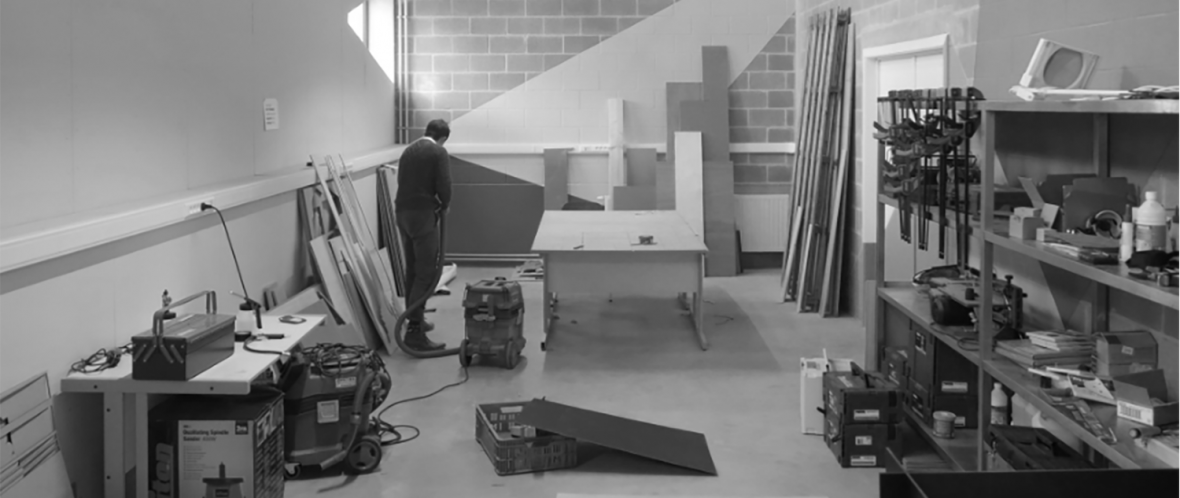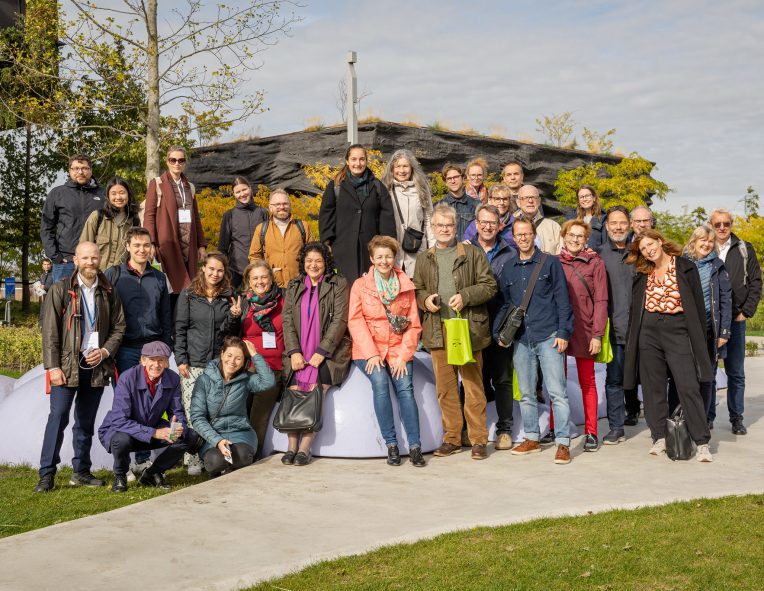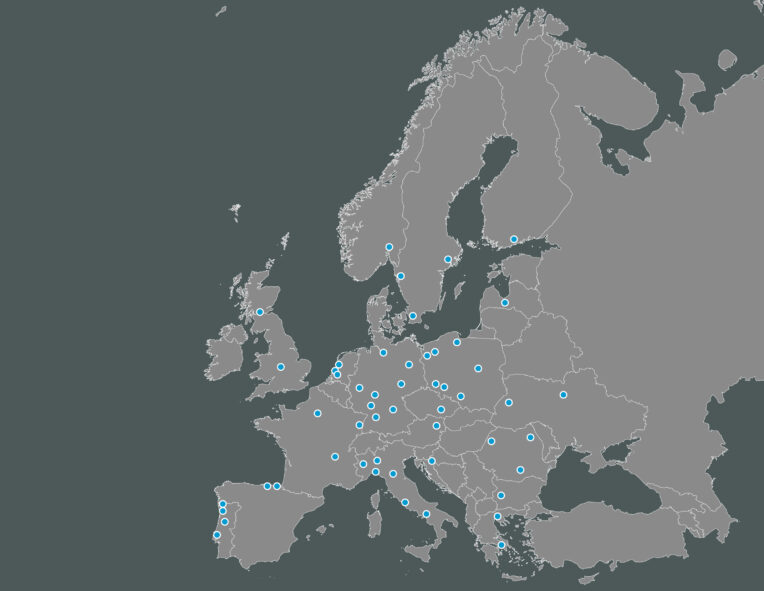13:00-15:00 CEST
Mixitiy and the route to reindustrialization of cities was at the heart this Productive City Expert Group’s new episode. Topics such as ‘industrial intensification’ or ‘industrial colocation’ represent common struggles for many metropolitan regions and areas, hence this session brought the story down to the ground offering a spectrum of possibilities through which mixity could be achieved. Thierry Petit, Senior Economist at l’Intitut Paris Région, guided us through a selection of four projects from case study research that he has been exploring showcasing clustering, densify and empower production in urban areas.
Whether is the establishment of Industrial Hostels in Paris and Montreuil, or the creation of a leather production cluster in the medieval city of Roman sur l’Isère, or the introduction of new housing functions within a productive block in what looks like already a quite dense urban pattern in Paris, and finally the transformation of a retail center into a brand-new crafting village in Nantes Métropole, a recurrent financing and management model structure emerge from the French examples.
What they have in common is the role of the Public investments which intervene to facilitate and guide the process of transition to the new productive uses.
Public money comes in to compensate the higher costs and the lower revenues of these type of interventions.
However, a further investigation could explore: What other players could be involved?
Also, land ownership is called in. In all four cases, the land is owned by the Public sector and transferred to companies which manage it on his behalf. How important is the land ownership to guarantee the long-term uses ?
A third element being highlighted by these examples is the matter of accessibility meaning by that the position of the site in the city map and the connection with the transport system.
Aspects to be taken into consideration when different functions with diverse impacts (such as traffic due to productive systems and distribution) intertwine.
Read more about the examples presented..
1.Industrial hostels in Paris and Montreuil
The Public sector is the landowner and control land use and functional developments through Companies of Public Interest (Sociétés d’intérêt public). In this way, it creates the premises for economic activities and production to be located within the existing urban structure.
Main goal of the public interventions is to create physical spaces for production at affordable leasing costs while ensuring architectural quality and creating living-work proximity.
The Industrial hostels are the result of this specific policy framework. The blocks look like offices building but in fact host production machineries (they could reach the 8-storeys high).In relation to this case, Binckhorst (https://binckhorst-denhaag.com/) and Mercurius Kwartier – both located in The Hague – offer extra examples where the City wants to transform a monofunctional logistic sector into a more dense and mixed area (https://www.denhaag.nl/nl/in-de-stad/nieuws/pers/mercuriuskwartier-extra-ruimte-voor-bedrijven-.htm).
While in Oslo, the model of a New Innovation District is currently being studied and could offer another concrete study case to observe.
- Question: what is the impact of the traffic due to the introduction of production activities within the urban fabric?
2. Leather workshop in Roman sur Isère
The medieval city of Roman sur Isère in the Southeastern part of France, in the Auvergne-Rhône-Alpes region, became an active center of leather shoes production by the end of the XIX century until the industry collapsed a hundred years later.
In this case, the remain of an abandoned workshop space was reactivated thanks to dedicated National Funds which subsidized the creation of a public body[1] leading the economic redevelopment of the site. A productive center was established where diverse activities clustered together (workshops for production, shops and showrooms as well as the city touristic info center) succeeding to optimize equipment and services’ costs.
Finally, a new School for leather crafting opened in the area.
- Question : how the employment rates have changed since the inception of this new productive cluster in the city?
3.RATP introducing mixity in a Parisian metro maintenance facility space
RATP is the Paris transport company. This example addresses today’s urban complexity where the high demand on housing provision sometimes collides with the need to keep production activities within the city’s boundaries. How to make possible the cohabitation of different functions within a dense urban fabric?
The players had different goals and requirements: on the one hand, RATP needed fundings to renew its transport equipment and wants to keep the facility production on the same site. On the other hand, the City of Paris needed to respond to the pressing housing demand with new provisions.
The agreement signed by the parties allowed RATP to acquire ownership rights from the Public actor on the maintenance facility space. On this premises, RATP sold part of the land to private developers for new housing provision in the private market and transformed a portion of the original land into social housing units (social housing estate was built and managed by RATP Habitat, social real estate agency of the transport company, see the link https://ratpgroup.com/fr/nos-entites/#marque-ratphabitat).
- Question: How quality of living standards can be secured?
This solution keeps the company equipment and workers locally, increases the urban functions of the existing blocks, however raises questions around the quality of living conditions in particular as concerns the social units which face the workshop spaces.
4.Nantes: creating a craft village among a dense residential area
Nantes Métropole owns the SEM (Société d’économie mixte) Loire Ocean Devolpment, public body which acquired the land and the permit to transform a deprived retail center into a productive space where a number of crafting workshops share common facilities and services.
The 5000m² retail center and the corresponding commercial leases have been bought by a public land corporation especially created for this purpose “sas Novapole”. The sas Novapole was created by the SEM Loire Ocean Developpement (SEM=public owned private company like) alongside with the help of the public bank Caisse des Depots et Consignations which owns 40% of the SEM.
The site is located in a neighbourhood addressed by the National Urban regeneration Programs (Zone Franche Urbaine : ZFU), which brought state grants to finance the former building destruction and the site depollution.
To design the new structure, an Architecture competition was launched.
The initiative was a success responding to a huge demand for small spaces and competitive property rental prices for local business, with more than 100 jobs from 30 various companies.
- Question: what are the implications of such interventions in the neighbourhood’s socio-economic dynamics? What other players, other than the public development companies, could be involved?
All in all, this working session has complemented the economic dimension that the group has been exploring.



